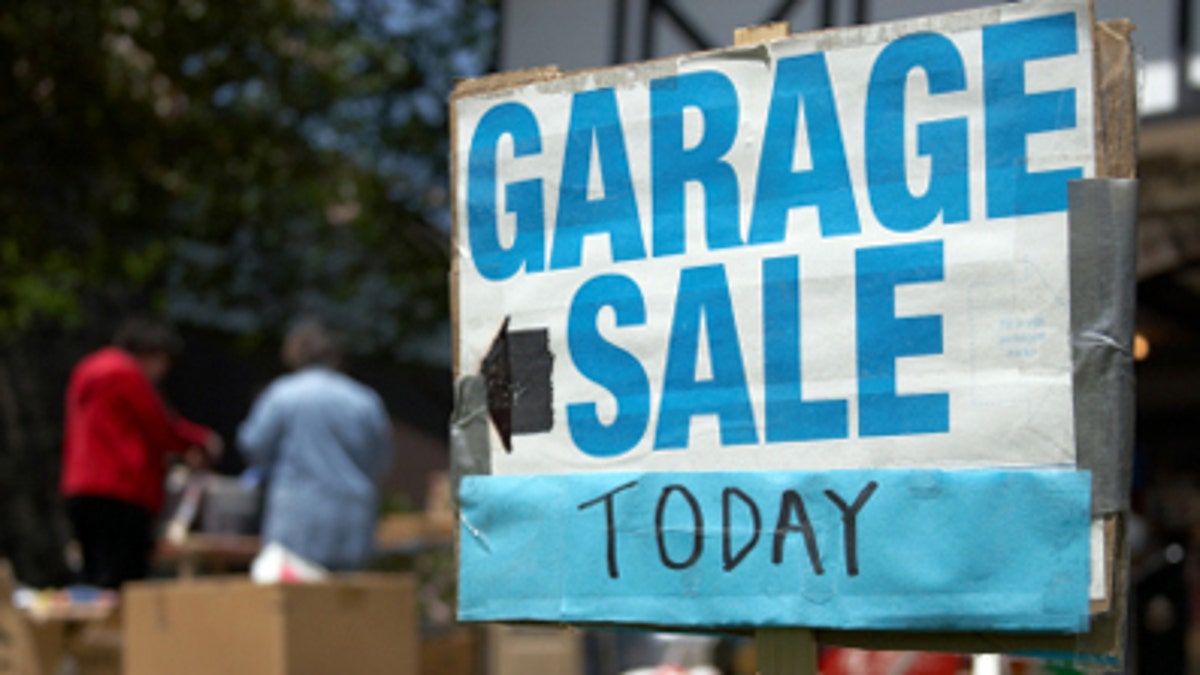
So you think you know how to throw a garage sale, huh?
While retail mavens at Ikea and Apple might make selling stuff look easy, the art of the sale can be tricky indeed. Believe me, my friend, it takes a lot more savvy than slapping up a few old folding tables to unload your junk. So here are 10 tips to make your next garage sale more successful.
1. Pick a Date
Be strategic about when you throw your garage sale. Make sure there are no major events happening in your town that would draw customers away. And avoid long weekends when people are less likely to be bargain hunting and more likely to be out of town.
2. Get Change
OK, this step is pretty obvious — so obvious that many people forget it altogether. Make a trip to the bank before it closes up for the weekend and get plenty of change. You’re going to be breaking a lot of tens and twenties over the weekend, and the last thing you want is to lose a sale because you don’t have correct change.
3. Band Together
You might think that increasing your competition is the last thing you want to do, but by getting your entire street or neighborhood in on the act, you transform a simple sale into an event. Sure, you might have to worry whether your next-door neighbor is undercutting you on the price of mismatched tableware, but the increased foot traffic a major sale draws will more than make up for it.
4. Get the Word Out
So you proudly put up a sign at the end of your block proclaiming your sale? You’re all set — if you’re throwing a garage sale in 1955, that is. C’mon, pal, this is the digital age. Hit Craigslist, community message boards and every other free online resource you can think of. And make your ads descriptive. By listing many of the items that you’re planning to sell — a lawnmower, baseball cards, a baby crib — you’re more likely to ensure that purchasers on the prowl for a single item will show up.
5. Start Early
The type of people who rise at the crack of dawn to trawl neighborhood sales are also the people on a mission to buy something. The mid-afternoon laggards, however, are likely just looking to kill time on a Saturday. By starting early you make sure you don’t miss out on the most coveted customers.
6. Try Before You Buy
People are rightfully cautious when it comes to buying electronics at a garage sale. A potential customer has no idea whether you’re selling that old DVD player because it’s outlived its usefulness, or because one of your kids jammed an entire package of crayons into the slot. Make sure to have all electrical gadgets plugged in so that customers can test things out first.
7. Fire Up the Grill
Nothing brings in the crowds like the mouth-watering scent of grilled meat. Not only can you make a little extra cash by selling burgers and hotdogs for a buck or two, but a chance to chow down gives hungry crowds one more reason to stop and browse at your sale.
8. Think Like A Kid
Put the brightly colored stuff out front — kids toys, gadgets and video games. If you can get the kids to stop to check out the toys, their parents will stop and browse a little, too. You also want to ensure these items are at a kid’s eye level. Putting the toys high up on a table isn’t going to help them sell.
9. The Art of Presentation
You might be working out of a garage, but that doesn’t mean your sale has to look bush league. If you’re selling pictures, hang them up on the wall, rather than stacking them up on a table. Make sure big-ticket items are prominently displayed, rather than dumped in a bin with a lot of other stuff. Customers would prefer not to have to dig through piles of junk to find a deal. Spend a few extra minutes making it easy for customers to browse and they might reward you with a sale.
10. Learn to Barter
Garage sale customers love to barter. But for a generation raised on the carved-in-stone prices of big box stores, the art of bargaining can be a bit of a challenge. If your haggling skills aren’t up to speed, here are a few tips.
First, make the price seem open-ended. If someone asks the price of an item, respond with a question in kind. “How’s $5 sound?” is a better response than “That’s $5.” Set you initial price a little higher than what you actually expect to get for it. That way when the customer talks you down, they can walk away feeling like they’ve scored a deal and you’ve still gotten the price you wanted. Finally, sell your stuff more quickly by giving the customer a cut rate if they buy the entire set.